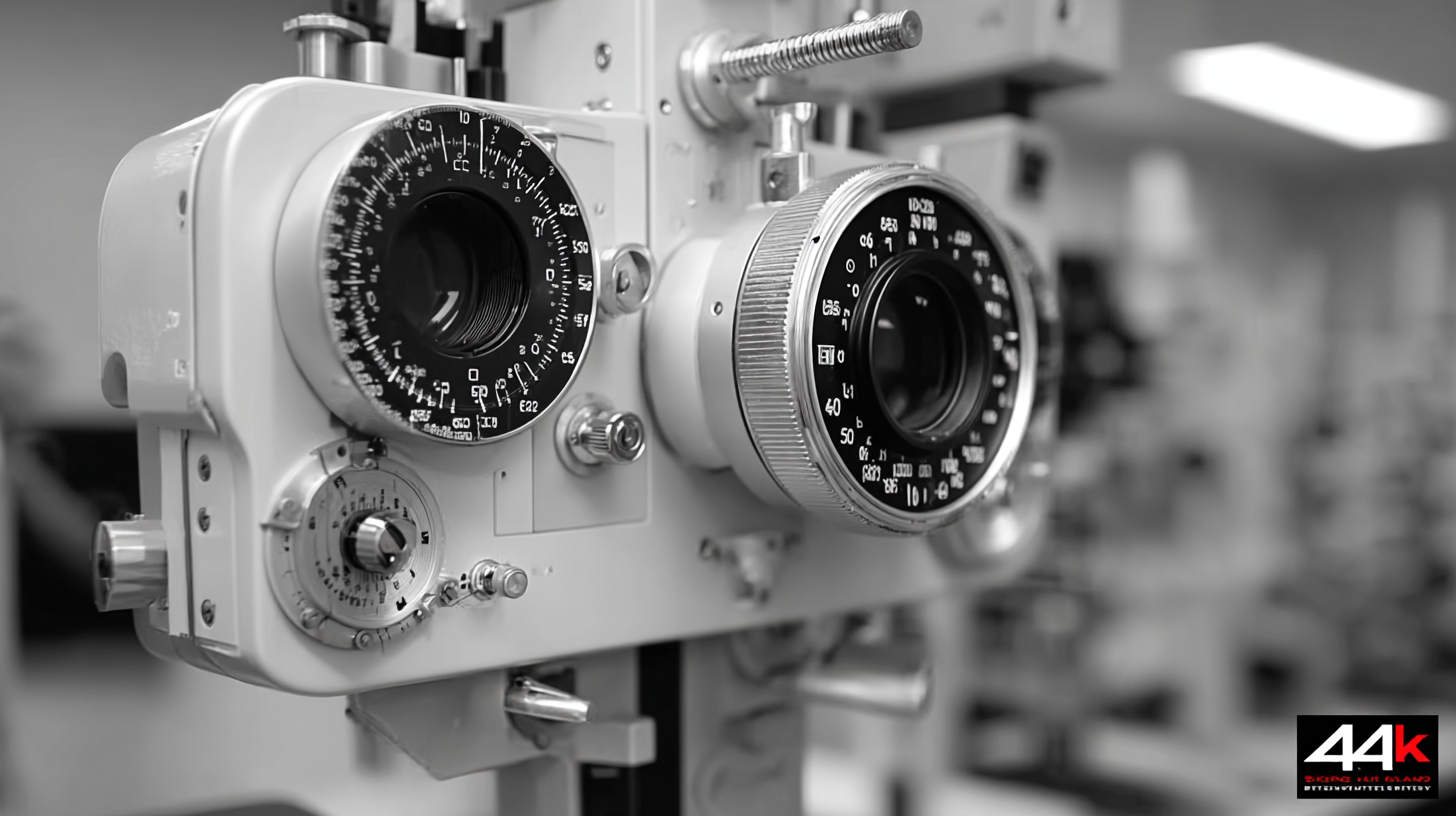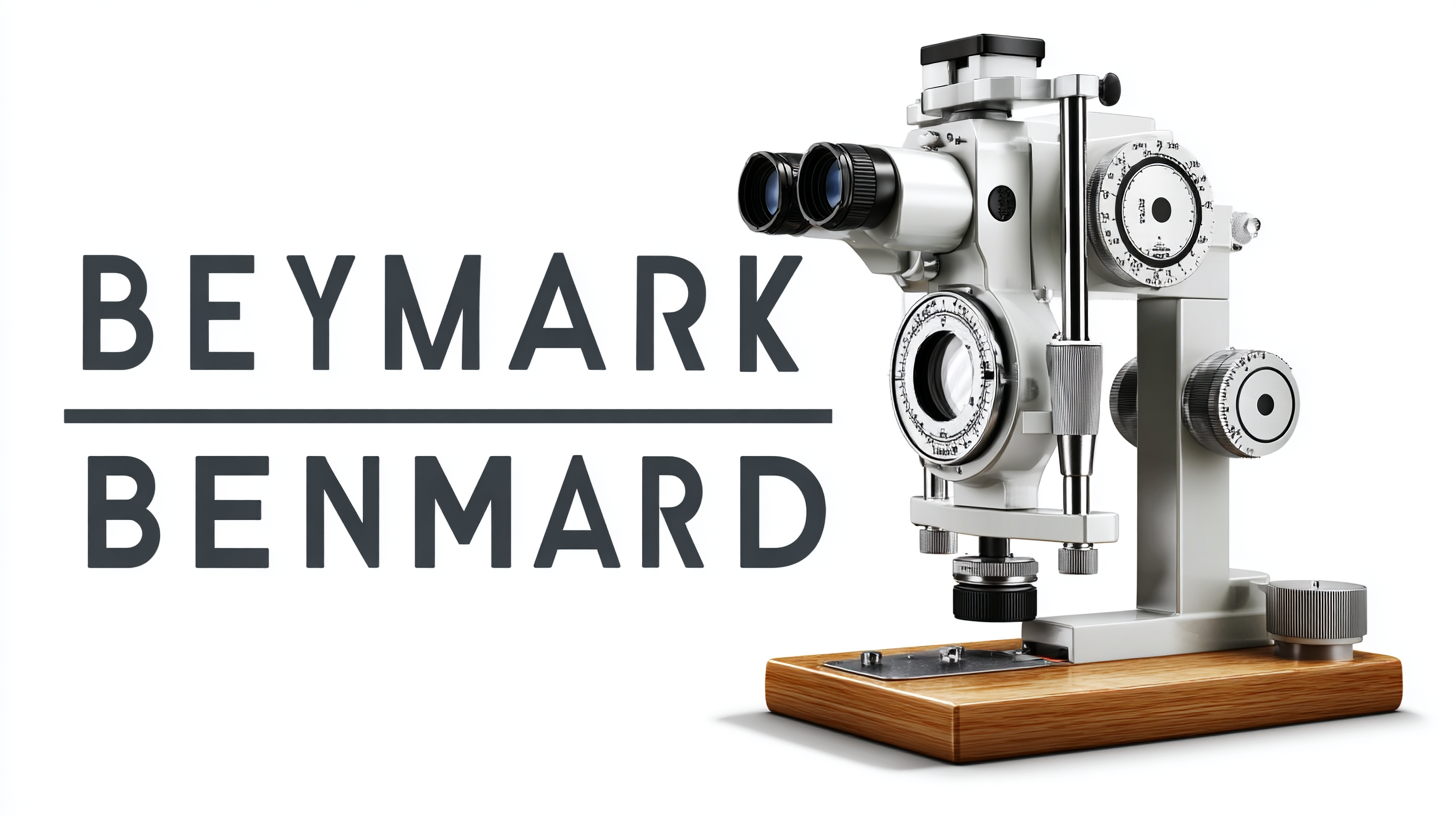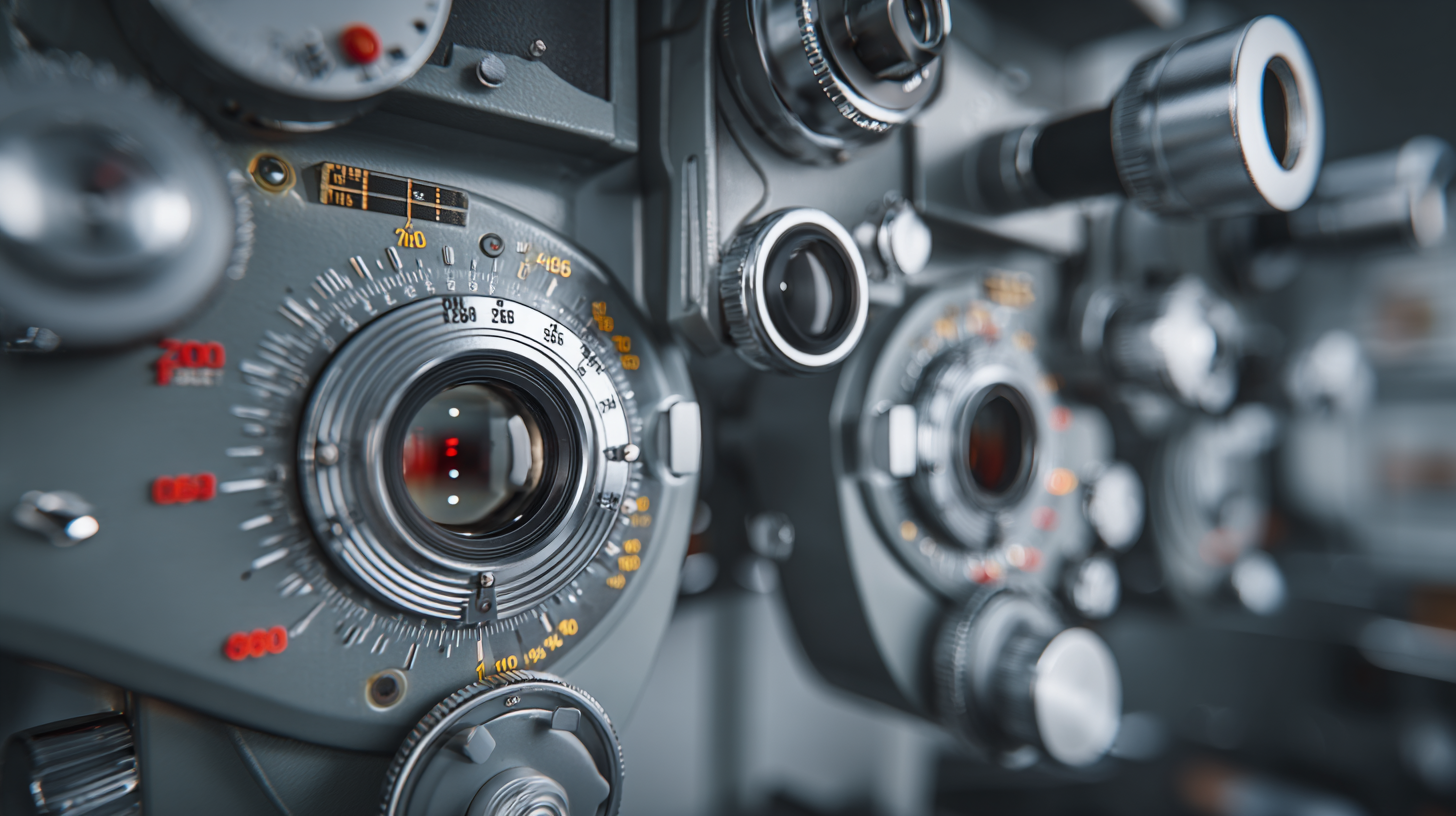Setting the Benchmark: Understanding Industry Standards for Best Optometry Equipment
In the rapidly evolving field of optometry, the selection of high-quality optometry equipment is crucial for delivering exceptional patient care and maintaining a competitive edge. According to a report by the American Optometric Association, advancements in technology have led to a significant increase in patient expectations, with over 70% of patients indicating that they prefer practices that utilize state-of-the-art equipment. Furthermore, a recent market analysis by Grand View Research shows that the global optometry equipment market is projected to reach USD 4.7 billion by 2025, highlighting the urgent need for practitioners to align their practices with industry standards. Understanding what constitutes the best optometry equipment not only enhances diagnostic accuracy and treatment effectiveness but also ensures compliance with industry benchmarks, ultimately leading to improved patient outcomes and satisfaction.

The Importance of Industry Standards in Optometry Equipment Development
In the rapidly evolving field of optometry, industry standards play a crucial role in the development and deployment of equipment. These benchmarks ensure that all devices meet essential safety and performance criteria, which directly impacts patient care. Adhering to established standards not only fosters trust between practitioners and patients but also enhances the overall quality of eye examinations and treatments. The use of certified equipment minimizes the risks of errors, thereby improving diagnostic accuracy and therapeutic outcomes.
Furthermore, industry standards facilitate innovation within the optometry sector. By providing a clear framework, manufacturers are able to design and develop new technologies that align with existing safety regulations. This compliance drives competition, encouraging companies to enhance their equipment's capabilities while ensuring they remain within the framework of safety guidelines. As a result, practitioners benefit from more advanced tools that can handle complex diagnostic needs, ultimately enhancing the patient experience. Emphasizing these standards is vital for the continuous improvement of optometric practices and the well-being of patients they serve.
Key Features of Top-Quality Optometry Tools and Technologies
In the ever-evolving field of optometry, the importance of high-quality tools and technologies cannot be overstated. According to a report by the American Optometric Association, up to 70% of eye-related issues can be effectively diagnosed and treated with advanced optometry equipment. Essential features of top-of-the-line tools include precision measurement capabilities, user-friendly interfaces, and integration with electronic health records. These attributes enhance both patient experience and clinical efficiency, enabling optometrists to deliver timely and accurate care.
Another significant aspect to consider is the role of digital technology in advancing optometry practices. A recent survey by Vision Monday revealed that over 40% of optometrists now utilize digital imaging systems in their practices, which improve diagnostic accuracy and treatment outcomes. These systems, such as fundus cameras and optical coherence tomography (OCT), provide detailed insights into patients' eye health and allow for earlier detection of conditions like glaucoma and diabetic retinopathy. As the industry continues to prioritize innovation, embracing these top-quality features becomes imperative for professionals aiming to exceed industry standards.
Setting the Benchmark: Understanding Industry Standards for Best Optometry Equipment
| Equipment Type | Key Features | Technology Level | Price Range | Recommended Use |
|---|---|---|---|---|
| Phoropter | Digital display, automated testing, light weight | High-tech | $3,000 - $5,000 | Vision exams, refraction |
| OCT Scanner | High-resolution imaging, 3D analysis | Advanced | $20,000 - $50,000 | Retinal imaging, glaucoma evaluation |
| Slit Lamp | Wide illumination, various magnification levels | Standard | $2,500 - $10,000 | Anterior segment examination |
| Autorefractor | Automated measurements, quick assessment | Intermediate | $1,500 - $4,000 | Refraction preliminary testing |
| Visual Field Analyzer | Perimetric testing, user-friendly interface | High-tech | $10,000 - $30,000 | Peripheral vision assessment |
Exploring China's Role in Global Optometry Equipment Manufacturing
As global demand for optometry equipment rises, China's role in manufacturing has become increasingly pivotal. The country has made significant strides in producing advanced optical technologies, catering not only to local markets but also to international needs. This transformation is a crucial aspect of China’s ambitions to elevate its position in high-tech sectors, moving away from its previous identity as merely "the world’s factory."
Tip: When evaluating optometry equipment, consider the manufacturer’s reputation and technological advancements. Brands that invest in research and development are likely to provide more innovative and reliable products.
China's manufacturing capabilities have been propelled by initiatives like "Made in China 2025," which aims to enhance the country’s position in high-tech industries. However, this initiative faces scrutiny and challenges due to ongoing geopolitical tensions, especially with Western nations concerned about technology transfer and competitiveness.
Tip: Look for equipment that aligns with international standards. Ensuring that the products meet or exceed these benchmarks can help in maintaining quality and reliability in your practice.
Comparing International Optometry Equipment Standards for Quality Assurance
When it comes to optometry, adhering to international equipment standards is crucial for ensuring quality and reliability in patient care. Different regions may have varying benchmarks for equipment performance, safety, and effectiveness, which can impact the consistency of eye care services provided to patients. Understanding these standards allows practices to make informed decisions about the instruments they invest in, ultimately leading to improved outcomes for patients.
**Tip:** Regularly review international standards from authoritative bodies such as the ISO (International Organization for Standardization) and ANSI (American National Standards Institute) to stay compliant with best practices. This includes reviewing the calibration requirements and maintenance protocols for your equipment to ensure optimal performance and safety.
In addition to understanding the standards, it’s important to compare the specific benchmarks used in various countries. For instance, the European standards may emphasize different aspects of quality assurance compared to those in North America. By being aware of these differences, practitioners can adopt a more holistic approach to their practice, ensuring they provide high-quality care that meets or exceeds global expectations.
**Tip:** Join industry forums or groups focused on optometry equipment standards to engage with peers and share insights. This collaboration can help you stay updated on the latest innovations and best practices in the field, further enhancing the quality of care in your practice.

Future Trends in Optometry Equipment: Innovations and Advancements Globally
The field of optometry is witnessing significant innovations and advancements that are reshaping the way practitioners operate. From tele-optometry to smart eyewear, future trends are driven by technology and the growing demand for enhanced patient care. As practitioners begin to adopt these tools, it becomes essential to stay updated with the latest equipment that not only improves accuracy but also boosts efficiency.
**Tip:** Look for new technologies that integrate with existing systems. For example, if your practice uses electronic health records, consider equipment that offers seamless integration to improve workflow and patient data management.
Moreover, advancements in telehealth have made remote consultations a viable option, allowing optometrists to reach patients in underserved areas. This shift is not just convenient but also key to improving overall eye health within communities. As optometrists embrace this trend, it is crucial to invest in reliable tele-optometry platforms that can support comprehensive eye exams remotely.
**Tip:** When choosing telehealth solutions, prioritize platforms that offer user-friendly interfaces and robust security measures to protect patient confidentiality. This will enhance both patient experience and trust in your services.

